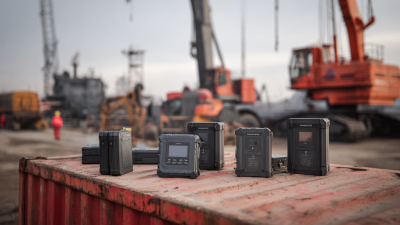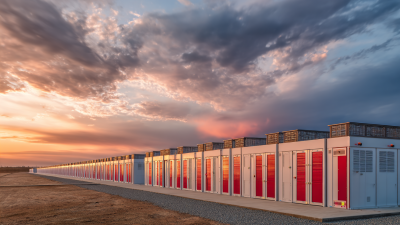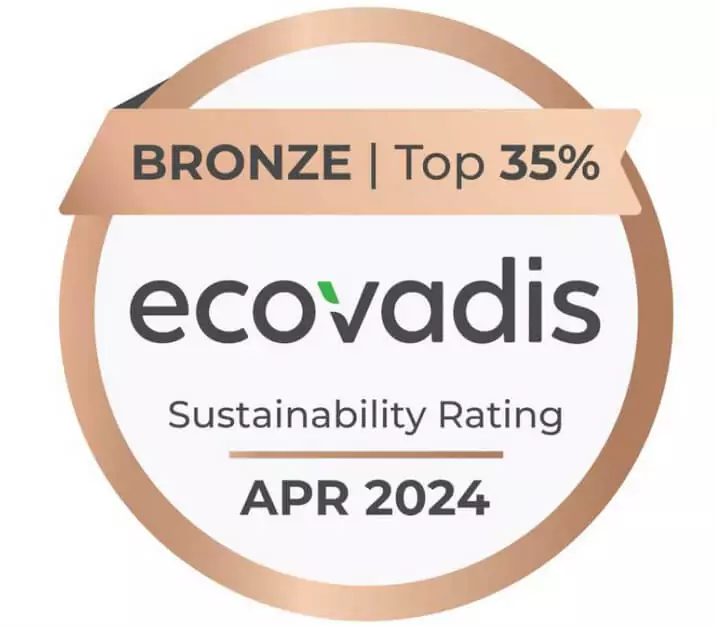Exploring the Future of Lithium Cells in Renewable Energy Storage Systems
The integration of renewable energy sources into our power grids is increasingly dependent on advanced energy storage systems. Among these, lithium cells have emerged as a cornerstone technology due to their high energy density, efficiency, and scalability. As the world pivots towards sustainable energy solutions, understanding the future of lithium cells becomes paramount. This article delves into the innovative developments in lithium cell technology and their potential to revolutionize energy storage solutions. It will explore how these cells can support intermittent renewable sources like solar and wind, ensuring reliable energy supply while minimizing carbon footprints. Furthermore, we will discuss the challenges that lie ahead, such as sustainability and recycling of lithium cells, and how continued research and development could pave the way for greener, more efficient energy storage systems in the coming years.
The Role of Lithium Cells in Modern Renewable Energy Integration
Lithium cells play a pivotal role in the integration of renewable energy systems, particularly in enhancing the efficiency and reliability of energy storage solutions. As the demand for sustainable energy sources grows, lithium technology is being harnessed to manage the intermittent nature of renewable sources like solar and wind. By providing high energy density and rapid charging capabilities, lithium cells serve as a critical component in uninterruptible power supply (UPS) systems, which are increasingly essential in data centers. These systems not only contribute to lower total cost of ownership (TCO) but also help reduce the carbon footprint, aligning with global sustainability goals.

Furthermore, innovative projects such as the del Desierto project in Chile highlight the integration of lithium cells into large-scale renewable energy architectures. This initiative underscores the importance of developing a robust energy supply framework that can seamlessly transition between various forms of energy, including hydrogen. The Smart Grid Hybrid Electrolysis-and-Combustion System (SGHE-CS) exemplifies how next-generation technologies can facilitate the synergistic interaction between hydrogen production, storage, and deployment, thus advancing the overall effectiveness of renewable energy systems. As these technologies evolve, lithium cells will undoubtedly continue to be at the forefront of ensuring a sustainable energy future.
Advancements in Lithium Cell Technology for Energy Storage Solutions
Recent advancements in lithium cell technology are positioning these batteries as key players in the development of renewable energy storage solutions. Innovations such as solid-state batteries and enhanced electrolyte formulations are significantly increasing energy density, safety, and charge/discharge cycles, making lithium cells more efficient for storing solar and wind energy. Additionally, improvements in manufacturing processes are reducing costs, which is critical for widespread adoption in residential and commercial energy systems.
Furthermore, researchers are exploring the integration of lithium cells with advanced energy management systems that optimize the use of stored energy. These systems can intelligently manage peak energy demands and ensure a steady supply even when renewable sources are intermittent. As the technology matures, the scalability of lithium cell storage solutions is becoming more apparent, enabling larger-scale applications such as grid storage. This progression heralds a new era of energy resilience, facilitating the transition towards a more sustainable energy future.
Future of Lithium Cells in Renewable Energy Storage
This chart shows the advancements in lithium cell technology over the years, focusing on energy density, cycle life, and cost reduction. The data reflects improvements that make lithium cells a viable option for renewable energy storage systems.
Comparative Analysis: Lithium Cells vs. Other Energy Storage Technologies
Lithium cells have established themselves as a dominant force in the realm of energy storage, particularly in renewable energy systems. Their high energy density, longevity, and efficiency make them a preferred choice over traditional lead-acid batteries. While lead-acid technology has been a longstanding option, it falls short in terms of cycle life and weight, making it less ideal for modern applications where space and efficiency are critical. Furthermore, lithium cells charge faster and can deliver more power, which is essential for accommodating the intermittent nature of renewable sources like solar and wind energy.
Other emerging energy storage technologies, such as flow batteries and supercapacitors, present interesting alternatives. Flow batteries, for instance, offer scalability and longer discharge durations, making them suitable for large-scale applications. However, they generally have lower energy density compared to lithium cells, which limits their use in compact setups. Supercapacitors excel in rapid charge and discharge cycles, making them excellent for short burst applications, yet they lack the capacity for long-term energy storage that lithium cells can provide. Thus, while each technology has its strengths, lithium cells remain at the forefront of energy storage due to their unique combination of power and capacity, pivotal for the future of renewable energy systems.
Challenges and Opportunities in Lithium Cell Manufacturing and Recycling
The manufacturing and recycling of lithium cells present both significant challenges and promising opportunities within the context of renewable energy storage systems. As the demand for efficient energy storage surges, manufacturers face the pressure of scaling up production while maintaining the quality and safety of lithium cells. The environmental impact of raw material extraction, particularly lithium and cobalt, looms large. Companies are increasingly scrutinizing their supply chains to adopt more sustainable practices, aiming to minimize ecological footprints without compromising performance.

On the recycling front, the current methods for reclaiming materials from spent lithium cells struggle with efficiency and economic viability. Innovations in recycling technologies could tackle the dual challenges of resource depletion and waste management, paving the way for a circular economy in energy storage. By developing advanced processes that can recover essential materials like lithium and nickel, the industry has an opportunity to reduce reliance on virgin resources. This not only enhances sustainability but could also foster new business models that capitalize on recycled materials, ensuring a robust future for lithium cells in renewable energy applications.
Future Trends: The Impact of Lithium Cells on Sustainable Energy Systems
As the demand for sustainable energy systems accelerates, lithium-ion batteries continue to play a pivotal role in the transformation of renewable energy storage. A recent outlook for the renewable energy industry suggests that advancements in battery technology, particularly lithium-ion, have enhanced their competitiveness against emerging alternatives like sodium-ion batteries. Reports indicate that lithium prices are on the rise, driven by surging electric vehicle (EV) demand, highlighting a strong correlation between the growing renewable sector and battery market dynamics.
However, the landscape is shifting as sodium-ion technology emerges as a cost-effective alternative. This technology has garnered attention due to its reliance on more abundant materials, potentially decreasing production costs. Notably, research on Prussian blue materials demonstrates the highest energy density currently achievable in sodium-ion batteries, suggesting that these might soon close the gap with traditional lithium technologies.
As countries like Japan pivot towards sodium batteries to bolster energy storage resilience, the future of energy storage systems remains an evolving narrative intertwined with lithium's enduring dominance and the rise of innovative solutions.












